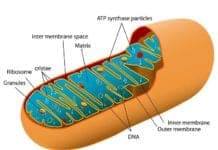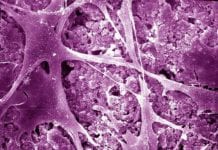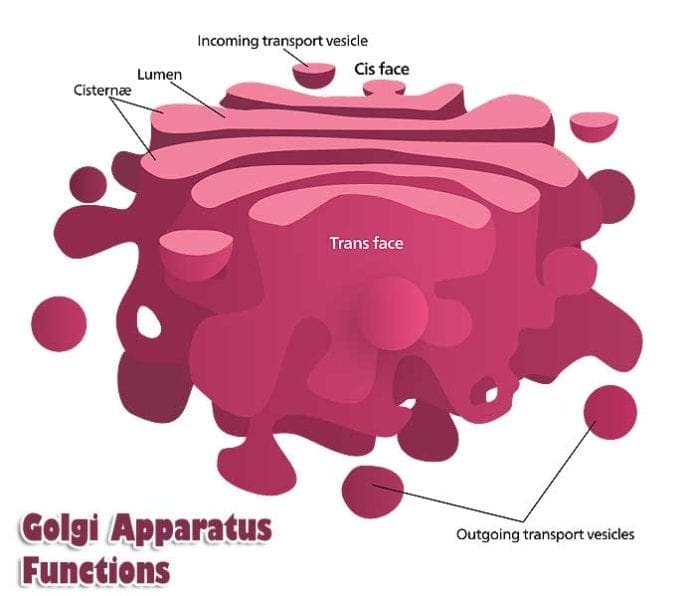
Golgi Apparatus Functions: The cell is the fundamental functional and structural unit of life. All cells comprise of cytoplasm, which holds various organelles enabling the cell to perform different functions. One such organelle present in eukaryotic plant and animal cells is the Golgi apparatus.
The Golgi apparatus has a flattened stack like structure containing flat disc-shaped membranes called cisternae. It has two faces, the cis face and the trans face at which vesicles bud bringing and carrying proteins to and from the Endoplasmic Reticulum (ER).
Proteins arrive from the convex ER, enter at the cis face for processing, modification, and transportation within the Golgi apparatus, and exit from the concave trans face.
Also known as the Golgi complex, its primary function is to receive, process, and sort proteins coming from and to the ER.
Functionally, The Golgi Apparatus has four distinct regions: The cis Golgi network, The Golgi Stack which is further divided into medial and trans sub-regions, and the trans-Golgi network.
Proteins coming into the Golgi from the ER pass through each of these regions and then exit from the trans face of the Golgi network to be sorted.
Table of Contents
- History of Golgi Apparatus
- 8 Golgi Apparatus Functions
- The Golgi Apparatus is responsible for protein processing events such as glycosylation that takes place within the Golgi bodies.
- The Golgi Apparatus is responsible for processing and modifying lysosomal proteins.
- One of the essential functions of the Golgi Apparatus is Lipid Metabolism.
- In plant cells, the Golgi Apparatus is the site of synthesis for complex polysaccharides that form a part of the cell wall of plants.
- The Golgi Apparatus forms the transportation network for movement of molecules and proteins to and from other organelles of the cell.
- Proteins, lipids, and molecules are transported to other cellular compartments and organelles by the process of Exocytosis that occurs in the Golgi Apparatus.
- In a similar fashion, the Golgi apparatus is also involved in a secretory pathway that allows movement of materials into the cell, from its Cis-face.
- The Golgi apparatus sorts and packages proteins and lipids processed and modified to their appropriate destinations.
History of Golgi Apparatus
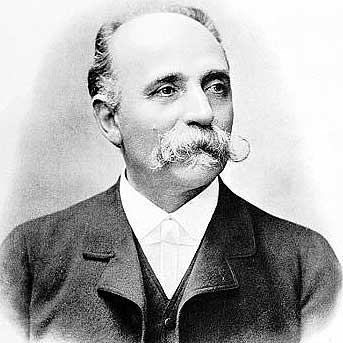
- Following this discovery, in 1900, Golgi, Negri, and Cajal attempted to stain and visualize this compartment in many other different kinds of cells.
- This discovered structure has initially coined the term “The reticular structure of Golgi“. The term popularly used today “Golgi Apparatus” was coined by Nusbaum in the year 1913.
- The primary role of the Golgi Apparatus in protein secretion was first proposed by Fuchs in the year 1902. Eventually, experiments carried out by Nassonov and Bowen provided evidence for this statement. However, several different scientists tried to disprove this theory and label the Golgi apparatus as a non-functional artifact of the eukaryotic cell.
- Until the year 1950, scientists continued to debate on the functionality of the Golgi apparatus, until some scientists elaborated its role using the electron microscope.
![]()
8 Golgi Apparatus Functions
Here are the top 8 functions of the Golgi apparatus:
The Golgi Apparatus is responsible for protein processing events such as glycosylation that takes place within the Golgi bodies.
- Protein processing events for glycoproteins within the Golgi apparatus comprises of a series of events that terminates in modification or glycosylation of the carbohydrate moieties of the protein structures.
- In the ER, the proteins undergo post-translational modifications. One such modification includes the addition of N-linked oligosaccharides to these proteins. Processing of these carbohydrate moieties occurs in the Golgi Apparatus.
- The very first step in the modification of these proteins in the Golgi Apparatus is the removal of mannose residues. Following this, N-acetylglucosamine is added, and two more mannose residues are removed.
- In the next step, fucose and two more N-acetylglucosamine residues are added. Finally, three galactose and three Sialic acid residues are added.
- This process of modification may differ from protein to protein and in different kinds of cells depending on the number of modification enzymes present in the Golgi Bodies.
![]()
The Golgi Apparatus is responsible for processing and modifying lysosomal proteins.
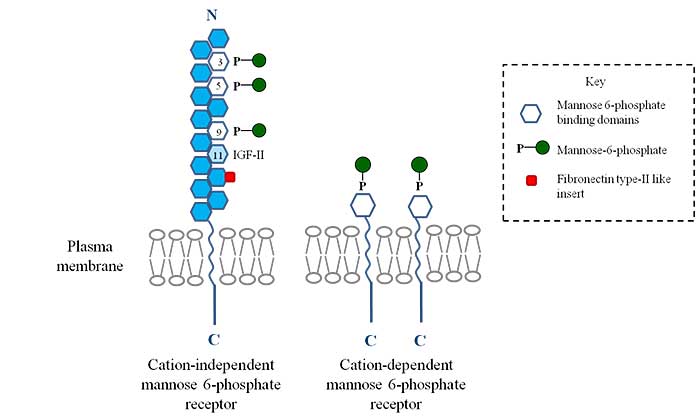
- The modification of lysosomal proteins begins within the cis-Golgi network itself.
- In this process, N-linked oligosaccharides of lysosomal proteins are modified sequentially by addition of phosphate moieties to mannose residues and the removal of N-acetylglucosamine.
- This process leads to the formation of mannose-6-phosphate residues on the protein that are later recognized by mannose-6 phosphate receptors present in the trans-Golgi network. This ensures proper packaging and transport of these proteins to the lysosomes.
![]()
One of the essential functions of the Golgi Apparatus is Lipid Metabolism.
- The Golgi Apparatus is responsible for the metabolism, in particular, the synthesis of glycolipids and sphingomyelin.
- Sphingomyelin is synthesized in the lumen of the Golgi Apparatus, and ceramide is added to it in the cytosol of the Golgi Apparatus.
- They are then transported using vesicular transport to the exterior.
![]()
In plant cells, the Golgi Apparatus is the site of synthesis for complex polysaccharides that form a part of the cell wall of plants.
- Plant cell walls are composed of three main types of carbohydrates: Cellulose, hemicellulose, and pectin.
- Complex branched-chain polysaccharides such as hemicellulose and pectin are synthesized in the Golgi Apparatus.
- After synthesis, these complex carbohydrates are packaged into vesicles are transported to the surface as part of the cell wall.
![]()
The Golgi Apparatus forms the transportation network for movement of molecules and proteins to and from other organelles of the cell.
- Proteins, lipids, and other molecules are transported from and to the Golgi apparatus using the secretory pathway.
- This pathway involves tiny transport vehicles called vesicles which bud off from the trans face of the Golgi apparatus and are then transported to their respective locations.
- Some proteins are packaged and delivered to the cell membrane, which then incorporates these proteins as a part of the plasma membrane.
![]()
Proteins, lipids, and molecules are transported to other cellular compartments and organelles by the process of Exocytosis that occurs in the Golgi Apparatus.
.
- Exocytosis is a transport and secretory pathway that makes use of vesicles to transport substances from the Golgi to other organelles.
- Following the processing and modification of proteins in the Golgi Apparatus, they are stored in membrane-bound storage structures known as vesicles, which are then transported to other organelles, cellular compartments, the plasma membrane or the cytoplasm.
- This entire exocytic pathway is known as the outward pathway.
- Unique proteins known as the SNARE proteins are responsible for docking the vesicles to membrane SNARE receptors present in the plasma membrane. This mechanism allows the vesicles to either fuse with the plasma membrane or releases the proteins to the exterior.
![]()
In a similar fashion, the Golgi apparatus is also involved in a secretory pathway that allows movement of materials into the cell, from its Cis-face.
.
- Endocytosis is a vesicular transport pathway that makes use of vesicles to transport materials into the Golgi apparatus for processing or modification.
- The process of endocytosis begins with the formation of an inward bud-like structure at the plasma membrane. The particle to be ingested is then engulfed by this structure and completely enclosed.
- It is then released into the cell to carry out its function, or to undergo further processing or modification.
- There are two kinds of endocytic pathways – Phagocytosis that ingests materials larger than 250nm in diameter, and pinocytosis – that ingests liquid particles and smaller materials of about 100nm diameter.
![]()
The Golgi apparatus sorts and packages proteins and lipids processed and modified to their appropriate destinations.
- From the trans-golgi network, materials are sent out to three main locations: Within the cell to lysosomes, Plasma membrane and to the outside of cells.
- The transportation of different proteins depends on their function. Each material that is transported has receptors or biomolecules on its surface that tags or directs it to its appropriate location.
- At the receiving end, receptors that recognize these tags allow these membrane-bound materials to fuse with the plasma membrane of the destination and release the contents into the destination cell.
![]()
As you can see, the Golgi apparatus is the central transportation hub for the movement of all molecules, proteins, lipids, and other materials.
It acts as a central cell station, which receives materials and processes, modifies, packages, and sorts them to their destination.
Golgi Apparatus is an essential and indispensable part of the cell without which the regular functions of the cell cannot occur.
![]()




